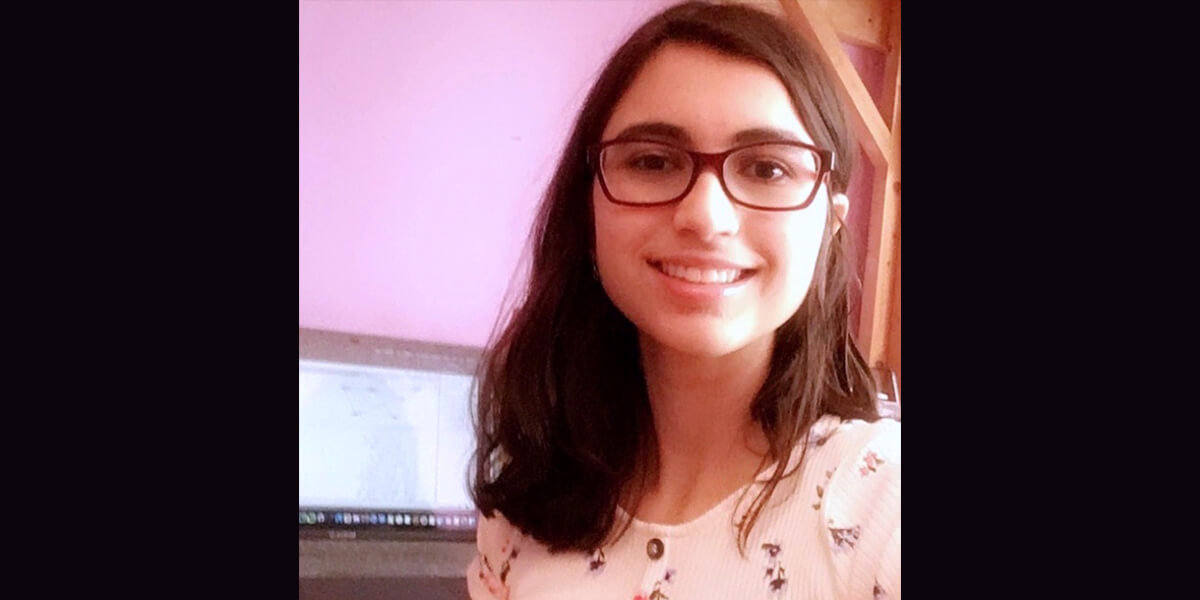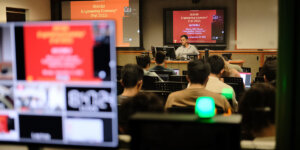
Computer science student Eszter Morvay, is one of the undergraduate researchers participating in the CURVE program conducting remote research this year. PHOTO/ESZTER MORVAY.
Why wait until you are senior or a graduate student to do research? The Center for Undergraduate Research in Viterbi Engineering (CURVE) Fellowship, launched in Summer 2020 began in response to students’ keen interest in doing working alongside many engineering faculty who are changing the world through innovation and technology.
Kelly Goulis, USC Viterbi School of Engineering senior associate dean for admission and student engagement, believes this research component is a unique part of the USC Viterbi engineering experience. “Viterbi faculty are world-renowned for their research. CURVE is a tremendous opportunity for our undergraduate students to participate and work with PhD mentors who know the areas of study and can help immerse students in their knowledge.”
Students early in their academic career can participate in the CURVE program to get a sense of the fields they are pursuing. Open to all Viterbi students, CURVE admitted over 110 students to this selective fellowship program this year. These students are currently conducting research remotely. The program pairs students with PhD mentors who can offer advice on best practices in research, or provide insights on academic writing including literature reviews, scientific abstracts, presentations and also the PhD application process.
Some of the topics CURVE participants are researching include disruptive space engineering, climate change, creating a testbed for self-driving vehicles, socially assistive robotics, four-legged robots, COVID-19 misinformation and AI for Social Good.
Selina Martinez, a first-year student in the Ming Hsieh Department of Electrical Engineering, relayed the reason she chose to participate in CURVE.
“Alzheimer’s Disease,” Martinez said, “turned off the lights in my grandfather’s ‘headquarters,’ as he couldn’t remember even the simplest life details.” Martinez said she seeks to use engineering to restore joy back into the souls of the forgetful, sight back into the eyes of the blind, and [physical] activity back into the routines of the immobile. She is currently working on research related to video analysis for health applications in Shri Narayanan’s Signal Analysis and Interpretation Lab.
Mechanical engineering student Rebecca Chanowitz notes the importance of using the time during the pandemic to leverage applied research to give back, whether it is to address issues that come up as result of COVID-19, or to address more localized concerns such as wildfires on the West Coast. Of her participation in CURVE this term, Chanowitz said: “It is important to me that I learn more about how to work towards solutions to these issues and take advantage of this unique time in which research is more accessible than ever in an online setting.”
Currently, she has been working on a robotic hand in the USC Viterbi Center for Advanced Manufacturing directed by SK Gupta, Smith International Professor in the Department of Aerospace and Mechanical Engineering. She is specifically working on a mobile manipulator and robotic gripper, which can help deliver medications to patients in isolation rooms that reduce contact of healthcare practitioners with patients who have infectious diseases. “Hopefully this will reduce the amount of PPE used in hospitals so this project relates to both the pandemic as well as to environmental crises,” Chanowitz said.
Assad Oberai, USC Viterbi vice dean for research, explains the importance of bringing this type of experience to undergraduates. “Many of our undergraduates go on to careers where they must find answers to completely new questions and develop new knowledge and insights. There is no right answer at the back of a book that they can check their work against. This can be daunting and exhilarating at the same time. The CURVE program gives them a hands-on experience of this process early on in their time at Viterbi,” he said.
Oberai added: “In this program, each student is embedded within a faculty’s research group, typically paired with a graduate mentor, and contributes significantly to the group’s research. Through this ‘apprenticeship,’ the CURVE students learn the process of creating and discovering something new. The mentors learn something as well. They learn what it takes to transfer the knowledge and skill that they have to someone who is new to research.”
Published on March 30th, 2021
Last updated on April 5th, 2021










